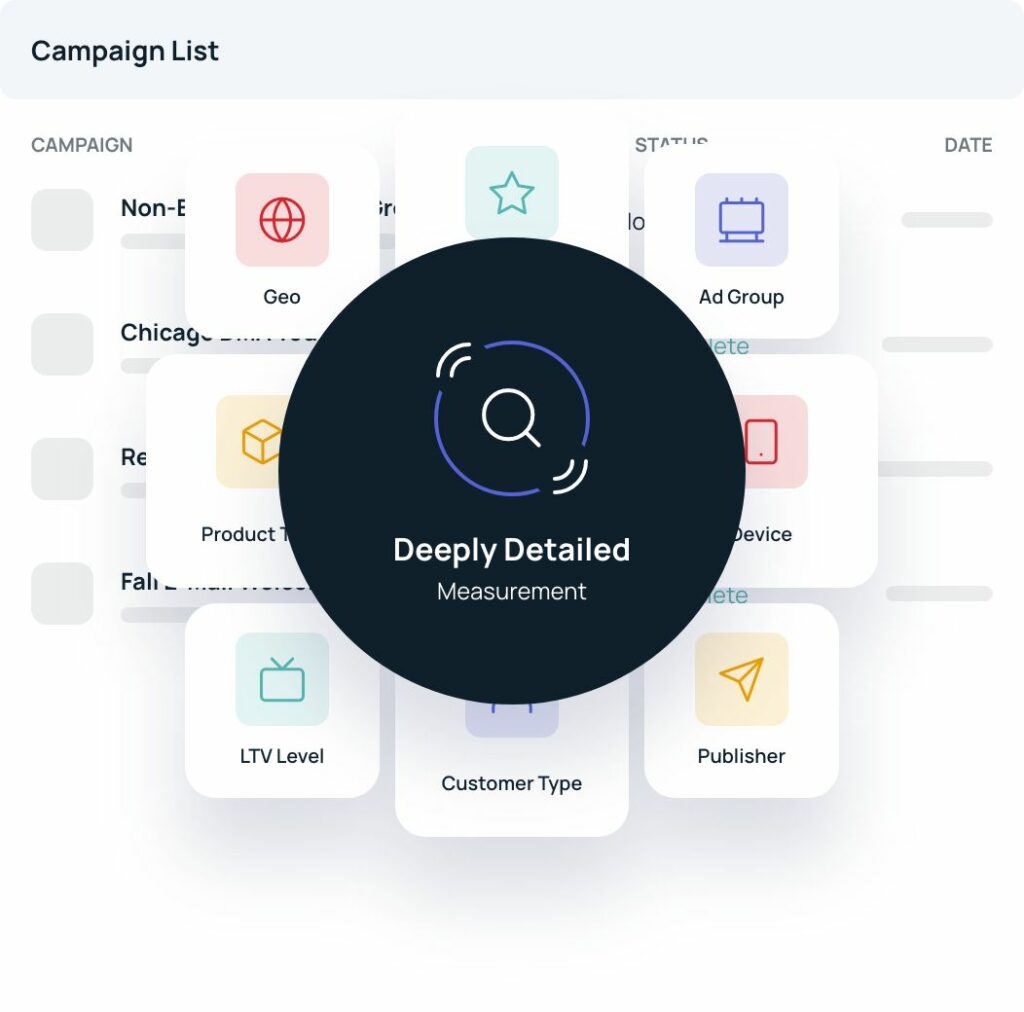Deciphering Influence: A Guide to Measuring Influencer Impact on Business
05/15/2024
In the dynamic landscape of modern marketing, few strategies have seen as meteoric a rise as influencer marketing. Leveraging the clout and charisma of individuals with dedicated followings, brands have found new avenues to connect with consumers authentically. Yet, amidst this proliferation of influencer partnerships, a significant challenge looms large: measuring the true impact of these collaborations. As brands invest substantial resources into influencer campaigns, the need for accurate measurement to assess ROI has never been more pressing. In this blog post, we aim to demystify the complexities of influencer impact measurement with a goal to provide a comprehensive guide for businesses seeking to navigate the intricate terrain of influencer marketing analytics.

Understanding Influencer Impact
“Influencer impact” refers to the tangible and intangible effects that influencers have on their audience and, by extension, on brands with whom they collaborate. This impact can be broadly categorized into two types: direct and indirect. Direct impact encompasses measurable outcomes directly attributable to influencer actions, such as increased website traffic, sales, or conversions resulting from a specific influencer campaign. Conversely, indirect impact refers to the more nuanced effects that influencers exert over time, including heightened brand awareness, improved brand sentiment, or changes in consumer behavior patterns that may not be immediately quantifiable but contribute to long-term brand growth and success. Both types of impact play crucial roles in understanding the full scope of influencer marketing effectiveness.
Influencer Direct Impact Statistics

Still need some convincing that Influencers as a media channel is even worth your time? Here are some statistics/examples about the direct impact of influencers/content creators:
- Creators influence purchase decisions, leading to increased ROAS: 54% of users said they are likely to buy a product that a creator on TikTok recommends (from the ARF’s “The Science Behind Understanding Creators of TikTok” presentation)
- Research indicates that 73% of Gen Z consumers say they have made a purchase as a direct result of seeing an influencer recommend a product on Instagram
- Influencer marketing yields an average return of $5.78 for every dollar spent – indicating that brands are seeing a substantial ROI when collaborating with influencers on Instagram (source:”Influencer Marketing ROI: How to measure your campaigns”)
- According to a survey by Influencer Marketing Hub, 74% of marketers believe the use of influencers/content creators helps brands with driving conversions or sales
Influencer Indirect Impact Statistics

Here are some additional statistics/examples on the indirect impact influencers have for brands:
- 60% of TikTok users enjoy content reviewing products, services, etc. (from the ARF’s “The Science Behind Understanding Creators of TikTok” presentation)
- Creators drive upper funnel metrics like awareness, discovery & association: 1 in 3 TikTok users globally agree that TikTok creators introduce them to new products and brands (from the ARF’s “The Science Behind Understanding Creators of TikTok” presentation)
- On average, influencer posts on Instagram have an engagement rate of around 3.21%. This is significantly higher than the average engagement rate for brands’ own posts, which typically hovers around 1% (source linked here)
- 63% of consumers trust influencers’ product recommendations more than the brands’ own advertising (source linked here)
- According to a survey by Influencer Marketing Hub, 80% of marketers find influencer marketing effective for driving engagement
The Importance of Measuring Influencer Impact
Measuring influencer impact is paramount for brands seeking to optimize their marketing strategies and allocate resources effectively. While the allure of partnering with influencers may be enticing, the true value lies in understanding the tangible returns on investment (ROI) generated by these collaborations- in other words, whether or not they can lift sales. Ultimately, the question of whether investing in influencers helps a brand hinges on empirical evidence derived from comprehensive measurement and analysis. By evaluating key performance indicators and correlating influencer activities with business outcomes, companies can make informed decisions about the efficacy of influencer marketing in achieving their goals and driving sustainable growth.
Key Metrics for Measuring Influence
In the pursuit of understanding the effectiveness of influencer marketing, delving into key metrics becomes crucial for discerning impact and optimizing strategies:
Reach Metrics
Reach metrics provide crucial insights into the extent of an influencer’s audience and the potential exposure of a campaign. These metrics typically encompass the total number of followers or subscribers across various social media platforms, as well as the potential reach of individual posts or content pieces. Understanding reach allows marketers to gauge the size and diversity of an influencer’s audience, assess their ability to amplify brand messages, and estimate the potential visibility of a campaign within specific demographics or geographic regions. While reach metrics provide valuable surface-level data, they should be complemented with other metrics to gauge deeper engagement and impact.

Engagement Metrics
Engagement metrics offer insights into the level of interaction and connection between an influencer and their audience. These metrics encompass likes, comments, shares, and other forms of active participation with influencer content. Unlike reach metrics, which focus on the size of an audience, engagement metrics delve deeper into the quality of interactions and the level of resonance a campaign generates.
However, many brands are too focused on “engagement metrics” these days, when they have been proven to not actually correlate with any sales (for more details, check out Andrew Tindall’s LinkedIn post). Therefore, brands need to be careful when relying on this particular set of metrics.

Conversion Metrics
Conversion metrics are meant to provide insights into the direct impact of influencer marketing campaigns on driving consumer actions and ultimately, sales. These metrics track the number of conversions, such as purchases, sign-ups, or downloads, attributed to influencer-generated content.
Again, we advise caution with this particular metric, especially with the rise of so many consumer privacy changes and regulations. Conversion metrics that rely on last click are wildly inaccurate – in fact, in an academic study from Northwestern University, they found that the average measurement error on a 7-day last click is 167%. Brands need to be very wary when using conversion metrics to make decisions about influencer marketing, or any marketing decision in general.

Sentiment Analysis
Sentiment analysis serves as a crucial tool for gauging the impact of influencer marketing on brand perception and consumer sentiment. This metric involves analyzing customer feedback, reviews, and social media mentions before and after influencer collaborations to assess any shifts in brand sentiment. By monitoring sentiment, marketers can determine whether influencer campaigns have positively influenced consumer perceptions, brand affinity, and overall sentiment towards the brand. Additionally, sentiment analysis helps identify potential areas for improvement and enables brands to address any negative sentiment promptly, ultimately fostering stronger relationships with consumers and enhancing brand reputation.

Did you know that brands can use paid media (like influencers) to drive positive sentiment lift independent of any infrastructure investments being made? OptiMine’s case study with Twitter shows how media impacts brand health KPIs/brand sentiment, proving that with targeted marketing campaigns and investments, brands can build positive brand attitudes and sentiments across an array of dimensions. Click here for access to the full case study.
Tools and Techniques for Measurement

Navigating the complex landscape of influencer marketing measurement requires leveraging an array of tools and techniques designed to capture and analyze the multifaceted impact of influencer collaborations. The table below provides a comparative overview of the strengths and limitations of each influencer measurement tool to help marketers choose the most appropriate tools based on their specific goals and resources:
| Measurement Tool | Pros | Cons |
|
Social Media Analytics |
|
|
|
Tracking Links/UTM Parameters |
|
|
|
Affiliate Marketing Tracking |
|
|
|
Surveys & Feedback Forms |
|
|
|
Brand Monitoring Tools |
|
|
|
Marketing Mix Modeling (MMM) |
|
|
MMM is Uniquely Positioned to Measure Influencers
Modern, agile Marketing Mix Modeling (MMM) offers a sophisticated approach to measuring influencer impact by analyzing the contribution of various marketing channels, including influencer marketing, to overall business outcomes. By leveraging statistical modeling techniques, MMM quantifies the impact of influencer campaigns on key performance indicators such as sales, revenue, and market share. This allows marketers to assess the incremental contribution of influencer marketing relative to other marketing channels and allocate resources effectively to maximize ROI. With its ability to provide a holistic view of marketing effectiveness and inform strategic decision-making, Marketing Mix Modeling serves as a powerful tool for measuring the long-term impact of influencer collaborations on brand success.
However, this is only the case if the Marketing Mix Modeling can measure influences in detail. Most MMM solutions can only evaluate the channel, and in doing so, miss the variations in value at an individual influencer level – except for OptiMine!
OptiMine is the only agile Marketing Mix Modeling solution on the market that measures digital and traditional marketing at deeply detailed levels (down to variations in value at an individual influencer level) using a privacy-safe approach without PII. Our OptiMine Index report shows how strong Influencers as a media channel can be (driving real, incremental impact for brands), but the catch: brands can only optimize it if they have a detailed enough MMM solution.

Contact us today to learn how OptiMine’s agile Marketing Mix Modeling software can help measure influencer impact on your brand and so much more!

